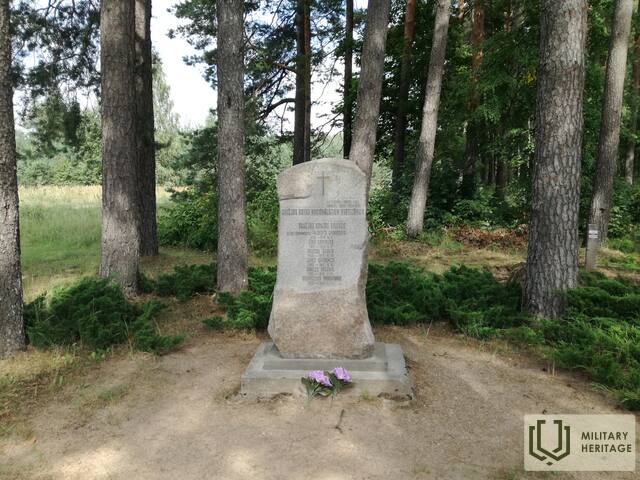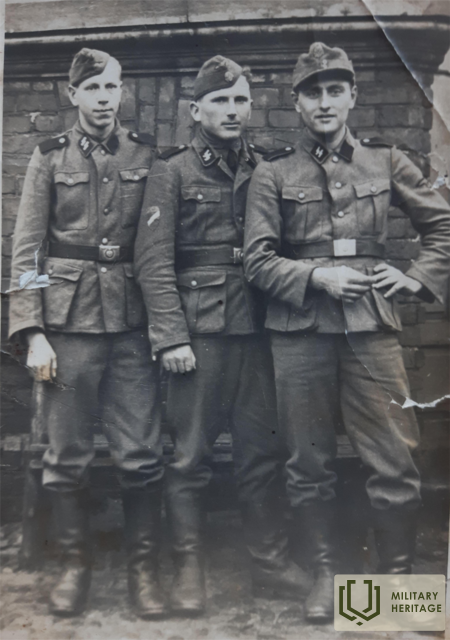Susėjos nacionalinių partizanų paminklas
Memorialinė vieta


 159
159



Susėjos nacionalinis partizanų būrys buvo suformuotas iš mažesnių suskaidytų miško brolijos grupių, nes iš pradžių nebuvo vadovo, kuris galėtų jas suvienyti. Trumpą laiką Artūras Grābeklis bandė koordinuoti Susėjos partizanų, o vėliau ir Markejaus Gorovniovo, žuvusio 1945 m. žiemą, veiklą. Susėjos nacionalinis partizanų būrys buvo sustiprintas po to, kai po visuotinės Vokietijos kapituliacijos į Kuršą, Sėliją, atvyko buvęs legionierius Albertas Kaminskis. Jis įvedė griežtesnę drausmę ir suvienijo mažesnes grupes bendrai kovai su sovietų okupacine valdžia. Taip pat buvo bendradarbiaujama su miško brolijos grupėmis iš netoliese esančių parapijų ir vietovių, ypač su Gārsenės grupe ir Lietuvos partizanais, kurie buvo įsikūrę Lietuvos ir Latvijos pasienyje.
Ankstyvaisiais ginkluoto judėjimo etapais akivaizdu, kad miško broliai nebuvo pasiruošę puolimams, negalėjo užimti nei Kaunackų sodybos, nei įsilaužti į Susėjos vykdomojo komiteto pastatą. Partizanai patyrė nuostolių ir ilgai negalėjo pasipriešinti Čekos kariuomenei, o pagrindinis kovos metodas buvo galvoti apie atsitraukimą laiku. Taip pat buvo problemų dėl partizanų aprūpinimo. Nepaisant esamų sunkumų, Susėjos nacionalinis partizanų būrys pirmaisiais pokario metais vis dar sugebėjo aktyviai priešintis sovietų okupacinei valdžiai. Ši partizanų grupė nustojo egzistavusi po jos vado A. Kaminskio žlugimo 1946 m. gegužės 14 d. Po to sekė ir kelių miško brolių legalizavimas, taip pat prisijungimas prie kitų partizanų grupių.
Paminklas Susėjos kuopos nacionaliniams partizanams atidengtas 1997 m. lapkričio 11 d. Sėlijos nacionalinių partizanų istorijos tyrinėtojo Gunāro Blūzmo iniciatyva. Šalia žuvusių Susėjos nacionalinių partizanų vardų, grubiai apdirbtame riedulyje po kryžiaus ženklu iškaltas tekstas: „Ant ežio galvos įsakiau tau saugoti tėvo žemę“. Paminkle minimi 1945 m. liepos 16 d. užpuolus Susėjos vykdomąjį komitetą žuvusieji – Jānis Grābeklis (1923-1945), Ādolfas Rācenis (1919-1945), Broņislavs-Arvīds Bīriņš (1919-1945), vėlesnis vardas9 (Edgars450-1) ir Edgars45. buvo pridėti nužudytieji Lina Kaminska (1917-1945) ir Albertas Kaminskas (1920-1946). Ant paminklo trūksta Arnoldo Dombrovskio (1923-1945) ir kitų Susėjos tautinių partizanų grupėse veikusių, 1945-1946 metais kritusių nacionalinių partizanų pavardžių.
Panaudoti šaltiniai ir literatūra:
H. Bruņinieks. Apgaudinėja mirtį. Ryga: Latvijos žiniasklaida, 2022, 79–94, 129 p.
https://karavirukapi.blogspot.com/2022/02/aknistes-pagasta-pieminas-akmens.html
Susijusi laiko juosta
Susijusios temos
Susijusi istorija
Selio miško brolių gyvenvietė Sūpės pelkėje
Sūpės pelkė siejama su nacionalinių partizanų gyvenviečių ir mūšių vietomis, kurios susiformavo sąveikaujant žmonėms ir vietovėms. Ji aprašyta tremtinio latvių rašytojo Alberto Eglīčio baladėje apie įvykius jo gimtojoje Sūpės pelkėje „Samanose ir purve“ – duoklėje Sūpės pelkės partizanams:
... „1945 m., kai pelkėje švytėjo ruduo –
Pokļevinskio gimtadienio proga Lieljānis vakarienės metu dalijasi:
Gluosniuose fermentuotas alus,
Romulanai garbina sviestą,
Džiovinu mamos kmynų duoną,
Džiovintas kumpis kovo mėnesio gabalėliuose,
Ir Stučkos svogūnai,
Ildzeniecės sūris.
Kambariai dervingose sienose
Ir žaibas trenkė širdyse,
Ir vienuolikoje sielų merdi –
"Žemėje supuvusios šaknys..."
Ši praeities interpretacija su įvykiais po Antrojo pasaulinio karo apėmė žmonių liudijimus, dvasios išraiškas ir vertybių sistemas. Ji primena visuomenės paramą nacionaliniams partizanams, kurių okupacinė valdžia negalėjo taip lengvai nugalėti.






